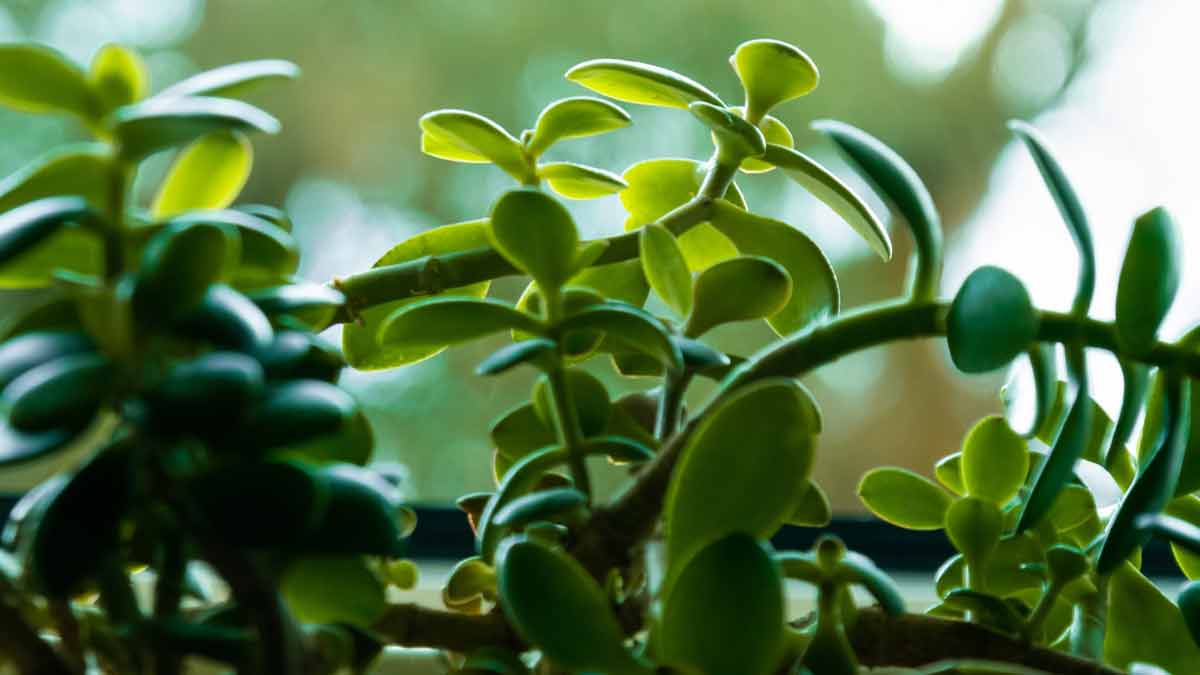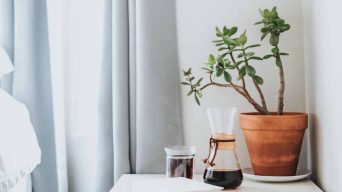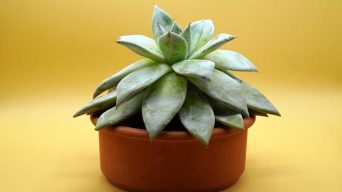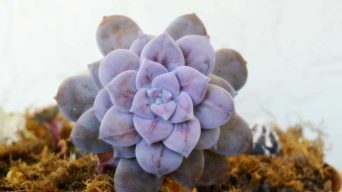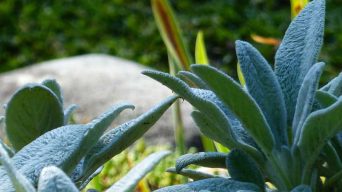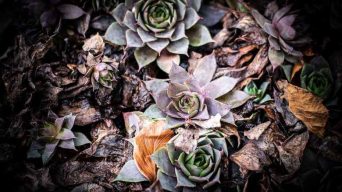Jade plants (Crassula ovata) are beautiful, hardy succulents that are popular houseplants.
They are easy to care for and can thrive indoors with bright indirect light.
However, sometimes Jade plants will start to droop, which can be a sign of a problem.
There are a few possible reasons why your Jade plant is drooping.
This article will discuss 7 of the most common causes and what you can do to fix them.
Why Is My Jade Plant Drooping and How Can You Fix It?
Jade plants are generally very hardy and easy to care for.
However, like all plants, they can sometimes experience problems.
One of the most common problems is drooping leaves.
Drooping leaves can be a sign of several different issues, so it is essential to identify the cause to find the best solution.
1. Too Little Water
If your Jade plant is drooping, one of the most common causes is that it is not getting enough water.
Jade plants are succulents and prefer to be on the drier side, but they still need to be watered regularly.
They need to be watered about once a week or whenever the soil is dry to the touch.
If you are not watering your Jade plant enough, the leaves will start drooping to tell you that it needs more water.
How To Tell If Your Jade Plant Needs Water
There are some telltale signs that your Jade plant is thirsty and needs more water.
- The leaves are drooping. When the leaves start to droop, the plant is not getting enough water and is trying to conserve what it has.
- The leaves are turning yellow. The leaves of a healthy Jade plant should be a deep green color. If they turn yellow, it is a sign that the plant is not getting enough water.
- The stems look shriveled or wrinkled. This is another way succulent plants conserve water when not getting enough.
- Brown spots are appearing on the leaves. Brown spots can be a sign of several different problems, but one of them is dehydration.
How To Treat an Underwatered Jade Plant
If you think that your Jade plant is not getting enough water, the first thing you should do is start watering it more frequently.
Water your Jade plant about once a week or whenever the soil is dry to the touch.
If the Jade plant leaves are already drooping, you can try giving the plant a good soaking.
To do this, water the plant until the water starts to run out of the drainage holes at the bottom of the pot.
Let the plant soak for about 15 minutes, then remove any excess water from the saucer.
Once you have increased the watering frequency, your plant should improve within a week or so.
2. Too Much Water
Giving your Jade plant too much water is one of the most common reasons for drooping leaves.
Jade plants are succulents and prefer to be on the drier side, so they do not need a lot of water.
Too much water can be just as harmful as too little water.
If you are watering your Jade plant too often, the leaves will start to droop to tell you that it is getting too much water.
How To Tell If Your Jade Plant Is Getting Too Much Water
There are some telltale signs that your Jade plant is getting too much water.
- The leaves are drooping. When the leaves start to droop, the plant is not getting enough water and is trying to conserve what it has.
- The leaves are turning yellow or brown. If the leaves are turning yellow or brown, it is a sign that the plant is getting too much water.
- The stems are soft or mushy. This is a sign that the plant is starting to rot because of too much water.
- Mold is growing on the soil. Mold can grow on the soil of an overwatered plant as the excess water provides the perfect conditions for it to thrive.
How To Treat an Overwatered Jade Plant
If you think that your Jade plant is getting too much water, you first should cut back on watering.
Water your Jade plant about once a week or whenever the soil is dry to the touch.
If the indoor plant leaves are already drooping, you can try letting the plant dry out for a few days.
Do not water the plant during this time and see if the leaves start to perk up.
If they do, you know you were watering the plant too often.
Once you have decreased the watering frequency, your plant should improve within a week or so.
If the leaves are still drooping after you have cut back on watering, the plant may have already been damaged by too much water.
In this case, you may need to repot the plant in fresh, dry soil.
3. Not Enough Light
Another common reason for drooping leaves is not enough light.
Jade plants need bright indirect sunlight to thrive.
If they do not get enough light, the leaves will start to droop to tell you that it is not getting the light it needs.
How To Tell If Your Jade Plant Is Not Getting Enough Light
There are some telltale signs that your Jade plant is not getting enough light.
- The leaves are drooping. Drooping leaves is one of the first signs that a plant is not getting enough light.
- The leaves are pale. If the leaves are pale, they cannot produce enough chlorophyll, which means the plant is not getting enough light.
- The plant is stretched out. If the plant is leggy and stretched out, it means that it is reaching for the light.
How To Treat a Jade Plant That Is Not Getting Enough Light
If you think your Jade plant is not getting enough light, you should first move it to a brighter location.
Ideally, you should move it to a spot where it will get bright indirect sunlight.
A west- or east-facing window is a good option. This location will provide the plant with the bright light it needs without being too direct.
If you cannot find a spot like this, you can try using grow lights.
Grow lights are a great way to provide your plants with the light they need, even if no natural light is available.
4. Too Much Heat
Another common reason for drooping leaves is too much heat.
Jade plants do best in cool temperatures between 65 and 75 degrees Fahrenheit.
If the temperature gets too hot, the leaves will start to droop to tell you that it is too warm.
How To Tell If Your Jade Plant Is Too Hot
There are some telltale signs that your Jade plant is too hot.
The leaves are drooping. Drooping leaves is one of the first signs that a plant is too hot.
The leaves are wilting. If the leaves are wilting, they are not getting enough water and trying to conserve what they have.
The leaves are browning. If the leaves are browning, it means that the heat is damaging them.
How To Treat a Jade Plant That Is Too Hot
If you think that your Jade plant is too hot, the first thing you should do is move it to a cooler location.
Ideally, you should move it to a spot where the temperature will remain between 65 and 75 degrees Fahrenheit.
If you cannot find a spot like this, you can try using an air conditioner or a fan to help cool the plant down.
5. Too Much Cold
Another common reason for drooping leaves is too much cold.
Jade plants do not tolerate cold temperatures well, and if the temperature gets too low, the leaves will start to droop to tell you that it is too cold.
Jade plants are native to Africa and are used to warm temperatures.
They will not tolerate temperatures below 50 degrees Fahrenheit well.
How To Tell If Your Jade Plant Is Too Cold
There are some telltale signs that your Jade plant is too cold.
- The leaves turn brown at the tips. If the leaves turn brown at the tips, they are damaged by the cold.
- The leaves are wilting. If the leaves are wilting, they are not getting enough water and trying to conserve what they have.
- The plant is stunted. If the plant is stunted, it is not growing as it should because of the cold temperatures.
How To Treat a Jade Plant That Is Too Cold
If you think that your Jade plant is affected by cold temperatures, the first thing you should do is move it to a warmer location.
Ideally, you should move it to a spot where the temperature will remain above 50 degrees Fahrenheit.
Place the plant in a sunny spot and keep it away from drafts.
If you cannot find a spot like this, you can try using a space heater or a heat lamp to help warm the plant up.
6. Pest Infestation
Another common reason for drooping leaves is a pest infestation.
There are a variety of pests that can affect Jade plants, including aphids, mealybugs, spider mites, and scale.
These pests will feed on the plant and cause the leaves to droop.
How To Tell If Your Jade Plant Has a Pest Infestation
There are some telltale signs that your Jade plant has a pest infestation.
- The leaves are yellowing or browning. If the leaves are yellowing or browning, it means that the pests are damaging them.
- The leaves are covered in webs. If the leaves are covered in webs, there is a spider mite infestation.
- The leaves are covered in white powder. If the leaves are covered in a white powder, there is a mealybug infestation.
- The plant is being sucked dry. If the plant is being sucked dry, there is an aphid infestation.
How To Treat a Jade Plant That Has a Pest Infestation
If you think your Jade plant has a pest infestation, you first should isolate the plant from other plants.
Then, you should inspect the plant carefully and remove any pests you see. Use a cotton swab dipped in rubbing alcohol to kill mealybugs and scale.
Use a water hose to blast aphids and spider mites off the plant.
After removing the pests, you should treat the plant with neem oil or insecticidal soap to prevent the pests from returning. These products are safe to use on Jade plants and will not harm the plant.
7. Root Rot
Root rot is a severe problem that can affect Jade plants. This problem is caused by a fungus attacking the plant’s roots.
The fungus will cause the roots to rot and die.
As the roots die, they will no longer be able to absorb water and nutrients from the potting soil. This will cause the leaves to droop as the plant tries to conserve what it has.
Root rot is a serious problem; if it is not treated quickly, it can kill the plant.
How To Tell If Your Jade Plant Has Root Rot
There are some telltale signs that your Jade plant has root rot.
- The leaves are yellowing or browning. If the leaves are yellowing or browning, they are not getting enough nutrients.
- The leaves are wilting. If the leaves are wilting, the plant is not getting enough water.
- The roots are mushy. If the roots are mushy, it means that they are rotting.
- The stem is soft and spongy. If the stem is soft and spongy, the plant is dying.
How To Treat a Jade Plant That Has Root Rot
If you think that your Jade plant has root rot, the first thing you should do is remove the plant from the pot.
Then, you should inspect the roots and remove any that are mushy or rotten.
After removing the affected roots, you should replant the plant in a fresh, sterile potting mix.
You should also treat the plant with a natural fungicide such as neem oil to prevent the fungus from returning.
How To Prevent Jade Plant Leaves Drooping
To prevent your Jade plant from drooping, you must ensure that it is getting proper care.
Here are some tips on how to care for your Jade plant:
- Place your Jade plant in an area where it will receive bright, indirect light.
- Water your Jade plant when the soil is dry to the touch.
- Use a well-draining potting mix.
- Prune your Jade plant to remove dead or dying leaves or stems.
- Fertilize your Jade plant once every two weeks during the growing season.
- Repot your Jade plant every two to three years.
If you follow these care instructions, your Jade plant should stay healthy and not droop.
Final Thoughts
Jade plants (Crassula ovata) are beautiful, easy-to-care-for plants that make a great addition to any home.
However, like all plants, they can sometimes experience problems.
One of the most common problems that Jade plants experience is drooping.
If your Jade plant is drooping, it could be due to one of several different problems.
The most common causes of Jade plant drooping are underwatering, overwatering, pests, and root rot.
If you think that your Jade plant is drooping, the first thing you should do is try to identify the problem.
Once you have identified the problem, you can take steps to solve it.
If you take good care of your Jade plant and provide it with the proper care, it should stay healthy and not droop.

